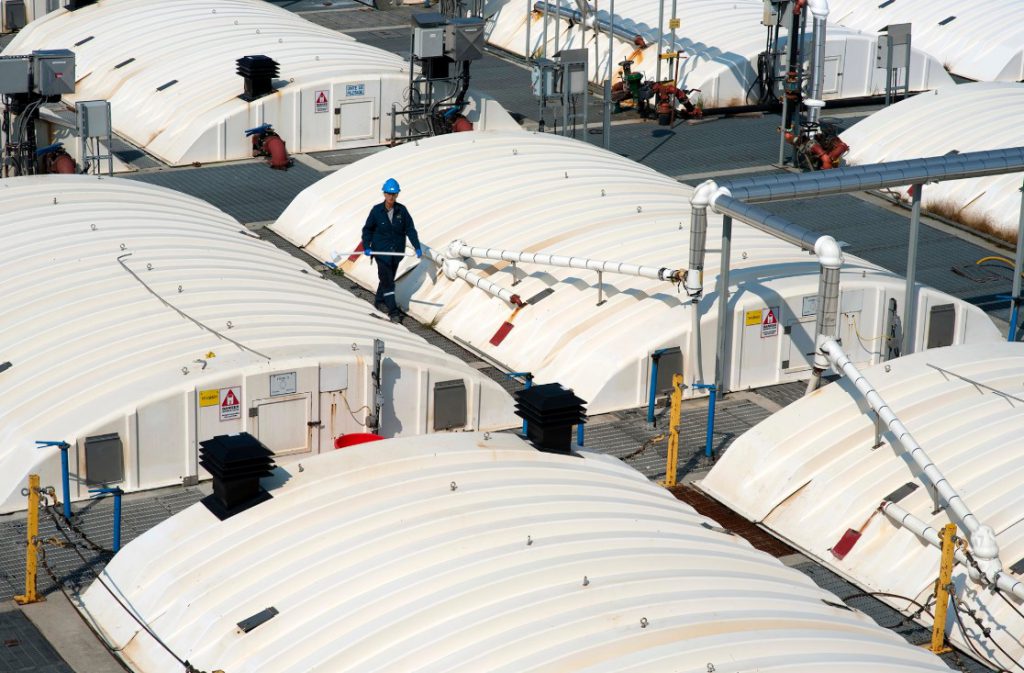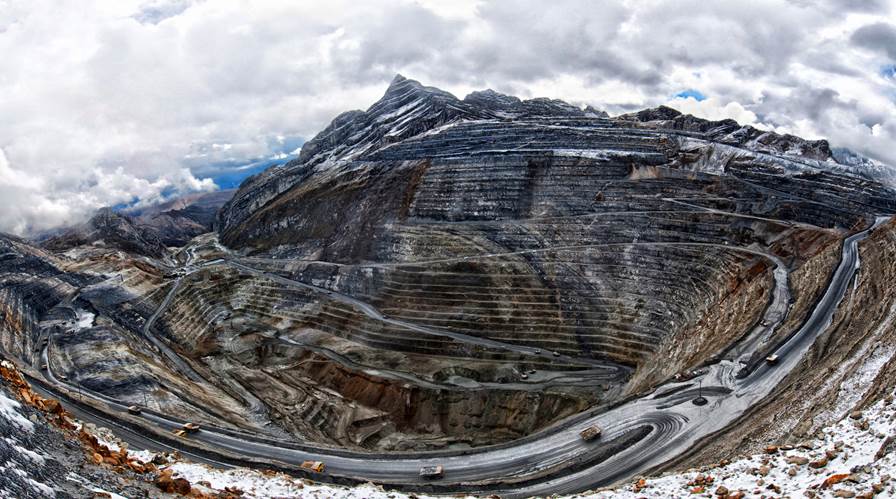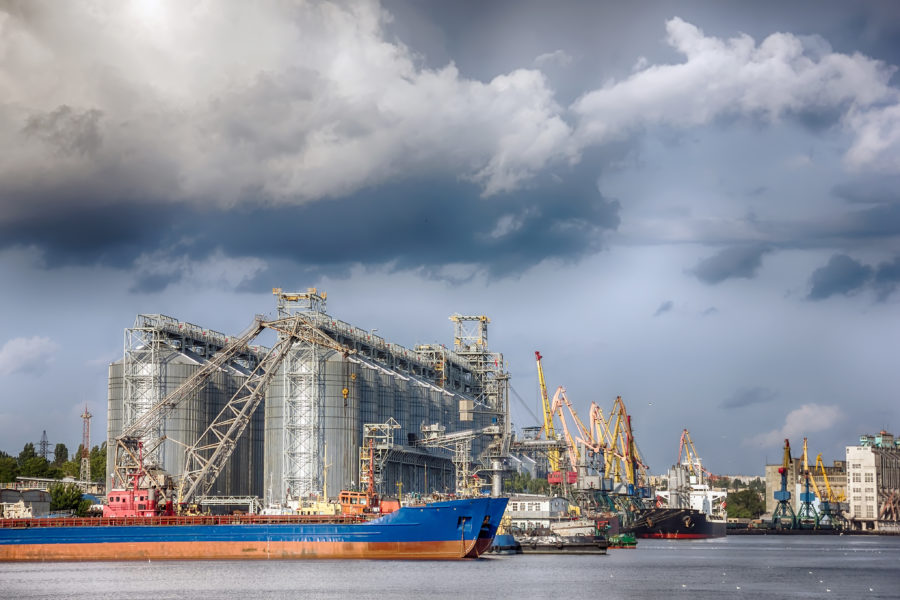With baby steps, Canada’s provinces prepare for a return to work

When workers at Agnico Eagle Mines Ltd. report back to work today at the LaRonde gold mine in Quebec’s Abitibi region, they’ll arrive in staggered groups at three separate entrances. Before they’re allowed in, a nurse will take their temperatures and give them a screening questionnaire. Assuming they pass, they’ll move inside to greet their supervisors behind plexiglass wickets and slather themselves with hand sanitizer.
The new safety measures — a sampling from a 20-page list of Covid-19 requirements, according to Chief Executive Officer Sean Boyd — become most challenging as the workers enter the giant elevator for a 45 minute trip that takes them three kilometers underground.
Workers face temperature checks and extensive screening to rule out exposure to the virus, along with strict spacing rules and greater sanitation and hygiene
“Normally in the cage you’re jammed in there like sardines,” Boyd said in an interview Tuesday. “We’ve reduced the capacity in the cage by more than 50%. The workers will enter one by one, they’re separated by a curtain, they can’t face each other, they can’t speak to each other.” The measures are extensive, he says, but “we certainly think it’s safe.”
Despite early signs of progress, it’s too early to proclaim victory in containing the pandemic in Canada. But with 6 million people seeking income support in the face of an unprecedented economic slump, pressure is building among the country’s provinces for a return to work. The effort will likely be messy, with bursts of activity followed by setbacks — and it will be months, if not longer, before the country is running anywhere near capacity.
Quebec, the province with 52% of the country’s cases and 44% of its deaths, took an initial step this week by making mining and home construction priority sectors, enabling their return to business. Ontario, Canada’s most populous province, has struck a cabinet committee to craft a recovery plan, while British Columbia may reveal more details this week on potential ways to consider relaxing some social-distancing restrictions.
“We don’t want to add a housing crisis on top of the current crisis,” Quebec Premier Francois Legault said Monday during a daily press briefing, in explaining why the province has changed its mind about construction.
Following China
On both sides of the border, regional governments are keen to control what reopens first and when. In Canada, provinces have control over many economic policies as well as public services from education to health. California and some of America’s most powerful states are forming their own regional alliances to coordinate the resumption of business, sparking a spat with U.S. President Donald Trump, who said he has “total” authority to reopen the world’s largest economy.
Prime Minister Justin Trudeau said on Tuesday the Canadian government is “coordinating” his country’s response.
“We are having ongoing discussions with the provinces at this point,” he said a news conference in Ottawa. “We recognize that different regions of the country are at different points along the evolution of their Covid-19 curve. We’re going to make sure that we try to stay coordinated as best as possible but those discussions are ongoing about how we’re going to reopen the economy. It’s just that it’s going to be a while still.”
In Ontario, Linda Hasenfratz, CEO of auto-parts maker Linamar Corp., has had a front row seat to the reopening process. About 95% of the company’s employees at her six factories in China are now available to work. Like the miner Agnico-Eagle, workers face temperature checks and extensive screening to rule out exposure to the virus, along with strict spacing rules and greater sanitation and hygiene at the plants. Most of the company’s 61 factories, which employ 27,000, remain shuttered, Hasenfratz said.
“We can’t be locked down forever,” she said in a phone interview. “The virus will still be around us. It won’t be eradicated so it’s really important that we try to create a work environment and protocol to make sure we work safely together.”
Any return to work hinges on further progress against the virus. The country had recorded 26,146 cases of confirmed Covid-19 and 823 deaths as of Tuesday afternoon, and seen a slight decrease in the pace of both in recent days.
Cautious steps
Dr. Bonnie Henry, British Columbia’s chief medical officer, said Monday the province may consider potential steps to relax restrictions “to get going again in our communities and in our health care sector,” but only after considering an updated model of the outbreak’s trajectory. That model is expected to be released later this week, she said. The province was the first to feel the brunt of the disease and now appears to be pulling out first.
“We will do like all countries in the world: a step-by-step, progressive approach,” Quebec Chief Medical Officer Horacio Arruda said.
It may also be easier to get factories and construction sites up running again than to entice people back to restaurants or other public spaces.
“The services side of the business, that’s harder,” Frances Donald, global chief economist and head of macro strategy at Manulife Investment Management, said on BNN Bloomberg television. “You can open your coffee shop again, but if people don’t feel confident to go to it, then you’re not going to see your economy come back online.”
Agnico-Eagle’s Boyd said the return to work is strictly voluntary. The company has 900 permanent staff at the LaRonde mine.
“It will be gradual and if we see things that we’re uncomfortable with, clearly we won’t go forward with it.”
(By Danielle Bochove, Sandrine Rastello, Kait Bolongaro and Natalie Obiko Pearson)
More News
{{ commodity.name }}
{{ post.title }}
{{ post.date }}



Comments